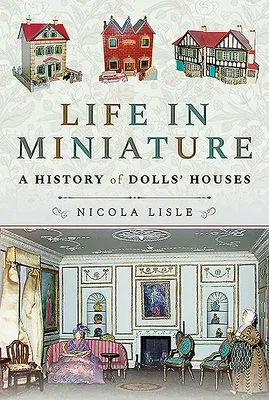Clear, detailed history of dolls' houses and how they illuminate our
past.
Popular in Britain since the late seventeenth century, dolls' houses are
tiny slices of social history that give us a fascinating glimpse into
domestic life over the last 300 years.
In this beautifully-illustrated book, Nicola Lisle explores the origins
and history of dolls' houses and their furnishings, from the earliest
known dolls' house in sixteenth-century Bavaria to the present, and
looks at how they reflect the architecture, fashions, social attitudes,
innovations and craftsmanship of their day. She discusses the changing
role of dolls' houses and highlights significant events and people to
give historical context. She also takes a look at some of the leading
dolls' house manufacturers, such as Silber & Fleming and Lines Brothers
Ltd (later Triang).
The book includes numerous examples of interesting dolls' houses, the
stories behind them and where to see them. This includes famous models
such as Queen Mary's spectacular 1920s dolls' house at Windsor Castle
and the eighteenth-century baby house at Kew Palace.
There is also a chapter on model towns and villages, which became
popular in the twentieth century and also give us a window on the past
by replicating real places or capturing scenes typical of a bygone
era.
There is advice for dolls' house collectors, as well as a detailed
directory of places to visit, a timeline of dolls' house history and
recommended further reading.
One of the most comprehensive guides available on the subject, this book
offers unique insights into the world of dolls' houses and is a must for
anyone with an interest in the history and appeal of these miniature
treasures.

